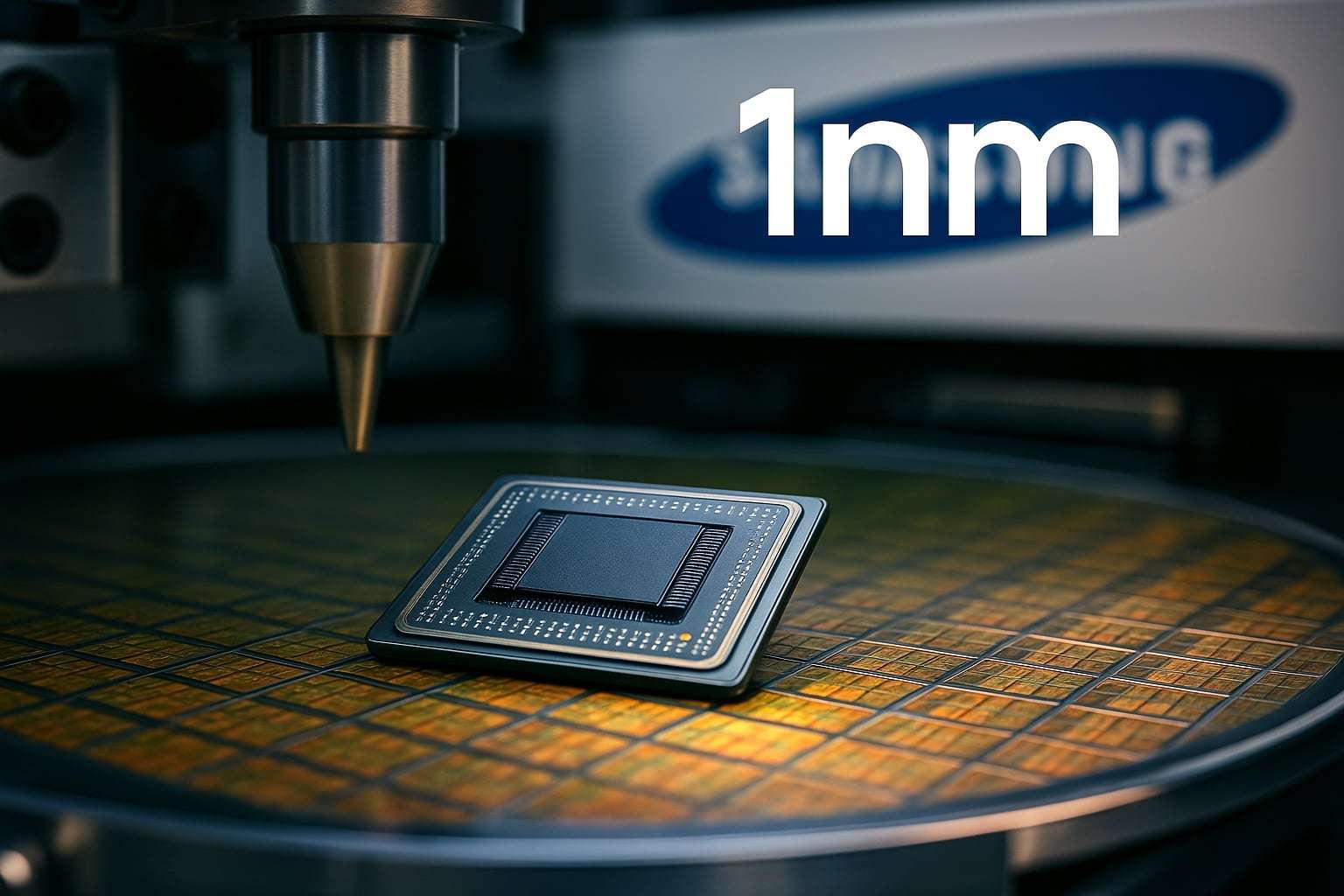The future of Samsung Foundry in the race for the most advanced semiconductor processes will depend on its second-generation 2 nm technology, known as SF2P. Although the South Korean company secured a billion-dollar contract with Tesla, it still faces major challenges to stabilize its manufacturing performance and compete head-to-head with TSMC.
A race against the clock in 2 nm
The semiconductor industry is at a pivotal moment: while TSMC, an undisputed leader, moves steadily toward mass production of 2 nm chips in 2025, Samsung Electronics is striving to solidify its GAA (Gate-All-Around) transistor technology.
Following initial difficulties with its 3 nm node, all eyes are now on the first and second generations of its 2 nm process. The former will power the upcoming Exynos 2600, the company’s new flagship SoC. However, analysts believe the real test will come with the second iteration, SF2P, which must demonstrate whether Samsung can reach the maturity needed to be a strong player in the advanced foundry market.
Tesla, the major contract marking a turning point
In July, various reports confirmed that Samsung sealed a $16.5 billion contract with Tesla to manufacture the AI6 chip, used in its Full Self-Driving (FSD) autonomous driving system, as well as applications in robotics and AI for data centers.
This contract not only provides strategic revenue for Samsung but also validates its technology in the eyes of clients who traditionally rely on TSMC for their cutting-edge designs.
The SF2P node promises a 12% performance improvement and 25% better energy efficiency compared to the first 2 nm generation, making it an attractive option for AI-intensive workloads.
The yield challenge: the Achilles heel
But advanced technology isn’t everything: in the semiconductor industry, manufacturing yield determines the actual viability of a node. According to industry sources, the yields of SF2P are not yet stabilized, raising concerns about Samsung’s ability to meet committed timelines and volumes.
A executive quoted by ZDNet was clear:
“The SF2P process will determine Samsung’s success or failure in staying at the forefront of foundry technology. Although yields are not yet stabilized, ongoing efforts will make the process more sophisticated in the second half of this year.”
Looking ahead: SF2P+ and the third generation of 2 nm
Samsung estimates that demand for 2 nm nodes will continue for at least four years. Therefore, it is already working on an evolution called SF2P+, which could enter production within two years.
This strategy aims to prevent falling behind TSMC, which is already exploring 1.4 nm processes, and new entrants like Intel Foundry Services and Japan’s Rapidus, determined to regain prominence in cutting-edge chip manufacturing.
A matter of prestige and survival
Beyond technical aspects, the 2 nm race is about national and industrial prestige. For South Korea, keeping Samsung as a leader vis-à-vis Taiwan is a strategic issue in the geopolitical tech landscape.
If Samsung successfully stabilizes SF2P and consolidates its ecosystem of clients — including giants like Apple, AMD, Qualcomm, Broadcom, and Intel — it could strengthen its position. But failure might result in being perceived as a secondary player limited to competing on price and volume.
Conclusion
Samsung stands at a crossroads: the success of its SF2P 2 nm process will determine its foundry business trajectory in the coming years. While TSMC remains the undisputed leader with remarkable reliability, Samsung must prove it can deliver not only innovation but also stability and scalability.
Tesla has already placed its trust in Samsung, but the market will scrutinize every move. Over the next 24 months, it will be decided whether the company can establish itself as a formidable rival or fall behind in an industry where every nanometer counts.
Frequently Asked Questions
1. What does it mean if a node has yield issues?
It means the percentage of functional chips per wafer is low. If yield is too low, production becomes costly and unviable.
2. Why is the Tesla deal so significant?
Because it validates Samsung’s technology in front of a high-profile client within a strategic area: AI and autonomous driving.
3. How does SF2P differ from Samsung’s first 2 nm node?
SF2P promises a 12% performance increase and 25% higher energy efficiency compared to the first generation.
4. Is TSMC still ahead?
Yes. Although Samsung is progressing, TSMC maintains a significant advantage in yields and customer confidence, solidifying its status as the global leader in advanced foundry manufacturing.
via: ZDnet

